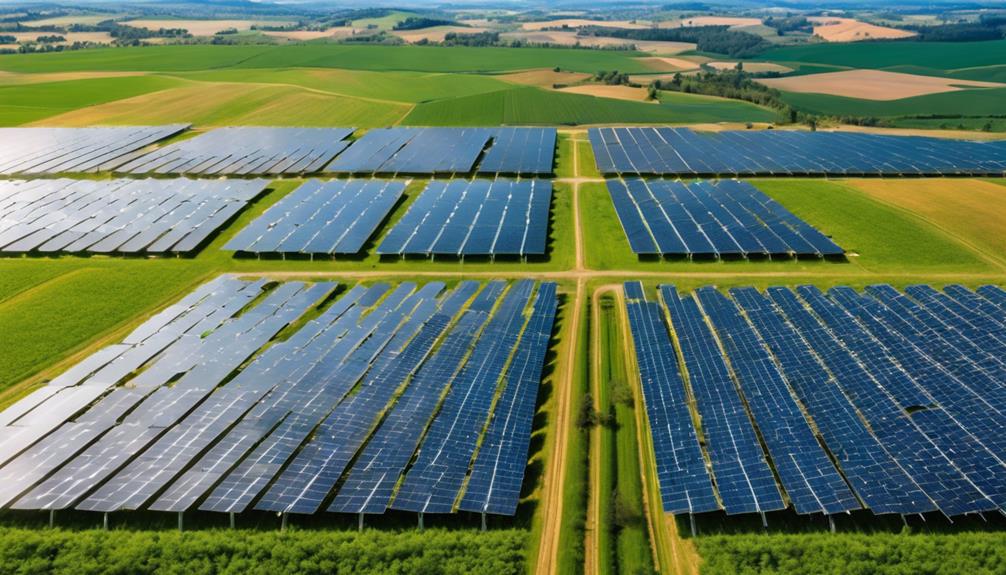
In an era where sustainability is more important than ever, solar panel energy production has emerged as a leading solution for individuals and businesses looking to reduce their carbon footprint. This blog post will explore the various facets of solar energy production, highlighting its benefits, technology, and future potential. By understanding the ins and outs of solar panel energy production, you can make informed decisions about adopting this eco-friendly energy source.
What is Solar Panel Energy Production?
Solar panel energy production refers to the process of converting sunlight into electricity using photovoltaic (PV) cells found in solar panels. When sunlight strikes these cells, it excites electrons, creating an electric current. This renewable energy source is not only clean but also abundant, harnessing the sun’s energy to power homes, businesses, and even entire cities. As the world shifts towards sustainable energy solutions, solar panel energy production has gained significant traction, becoming a viable alternative to fossil fuels.
The Advantages of Solar Panel Energy Production
The benefits of solar panel energy production are numerous. Firstly, it significantly reduces electricity bills. By generating your own electricity, you can lower your reliance on the grid, leading to substantial savings over time. Additionally, many governments offer incentives and tax credits for solar installations, making it financially attractive. Moreover, solar energy is renewable, meaning it won’t deplete over time, unlike fossil fuels. This sustainability aspect not only helps the environment but also contributes to energy security and independence.
How Solar Panels Work: The Science Behind Energy Production
Understanding how solar panels work is crucial for appreciating their role in energy production. Solar panels consist of multiple PV cells made from silicon, which is a semiconductor. When sunlight hits the cells, it creates an electric field, allowing electrons to flow and generate direct current (DC) electricity. An inverter then converts this DC into alternating current (AC), which is usable in homes and businesses. This efficient conversion process maximizes energy output, ensuring that solar panel energy production is both effective and reliable.
The Environmental Impact of Solar Panel Energy Production
Solar panel energy production has a positive impact on the environment. By utilizing solar energy, we can significantly reduce greenhouse gas emissions, helping to combat climate change. Unlike fossil fuels, solar energy does not release harmful pollutants into the atmosphere, resulting in cleaner air and improved public health. Furthermore, the lifecycle of solar panels, from manufacturing to disposal, is becoming increasingly sustainable, with more companies focusing on recycling and reducing waste. Transitioning to solar energy contributes to a healthier planet for future generations.
Exploring Different Types of Solar Panels
Not all solar panels are created equal, and understanding the different types can help you make an informed choice. The most common types include monocrystalline, polycrystalline, and thin-film solar panels. Monocrystalline panels are known for their high efficiency and longevity, making them a popular choice for residential installations. Polycrystalline panels are slightly less efficient but are often more affordable. Thin-film solar panels, while less efficient, are lightweight and flexible, making them suitable for various applications. Each type has its own set of advantages, and the choice depends on factors such as budget, space, and energy needs.
Factors Affecting Solar Panel Energy Production
Several factors can influence the effectiveness of solar panel energy production. Location and climate play significant roles, as areas with more sunlight will naturally yield higher energy output. The angle and orientation of the solar panels can also affect efficiency; ideally, panels should be installed facing south at an angle that maximizes sun exposure. Additionally, shading from trees or buildings can reduce energy production, so it’s essential to consider the surroundings during installation. By understanding these factors, you can optimize your solar energy system for maximum performance.
The Future of Solar Panel Energy Production
The future of solar panel energy production looks promising, with ongoing advancements in technology and increasing adoption rates. Innovations such as solar batteries are enhancing the capabilities of solar systems, allowing users to store energy for use during cloudy days or at night. Furthermore, the integration of smart technology and energy management systems is making it easier for homeowners to monitor and optimize their energy consumption. As costs continue to decline and efficiency improves, solar panel energy production is poised to become a cornerstone of the global energy landscape.
Making the Switch: How to Get Started with Solar Panel Energy Production
If you’re considering making the switch to solar panel energy production, the first step is to assess your energy needs and budget. Research local solar providers and obtain multiple quotes to compare costs and services. It’s also beneficial to explore available incentives, rebates, and financing options to make your investment more affordable. Once you’ve chosen a provider, they will guide you through the installation process, ensuring that your system is optimized for your specific circumstances. By taking these steps, you can join the growing movement towards sustainable energy and enjoy the numerous benefits of solar power.
In conclusion, solar panel energy production is an essential component of a sustainable future. By harnessing the power of the sun, we can reduce our reliance on fossil fuels, lower energy costs, and contribute to a healthier planet. With advancements in technology and increasing awareness of environmental issues, solar energy is becoming more accessible and efficient. Embracing solar power not only benefits individuals and businesses but also plays a crucial role in addressing global energy challenges.





